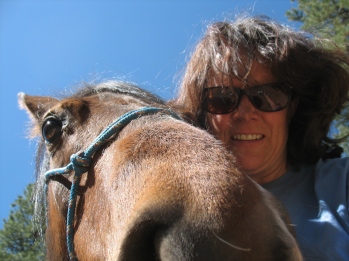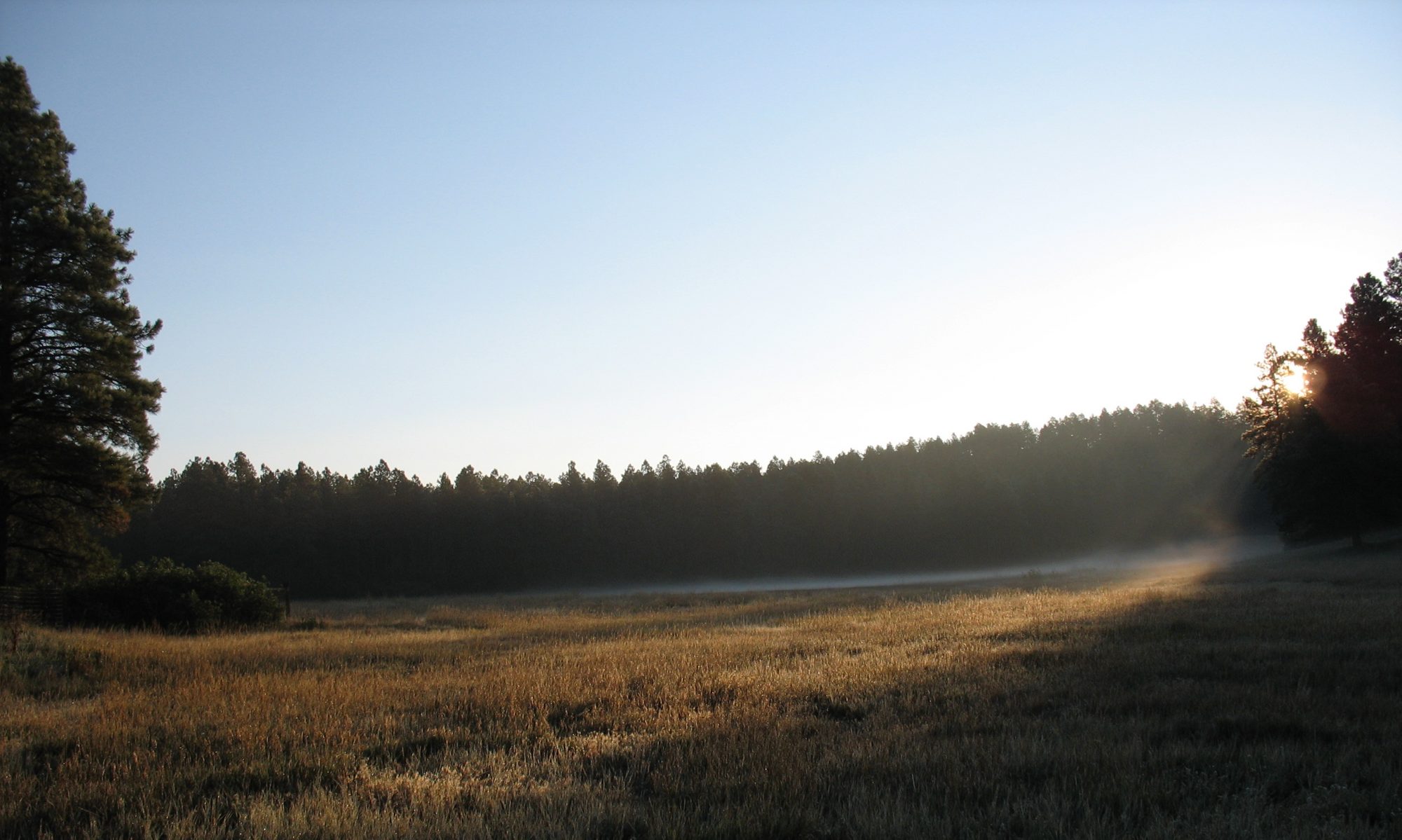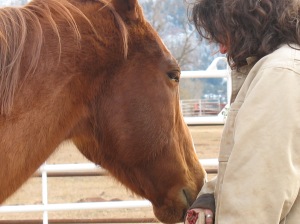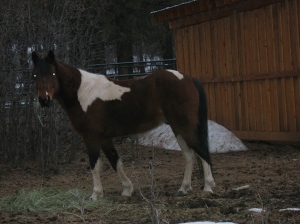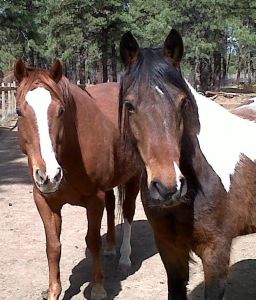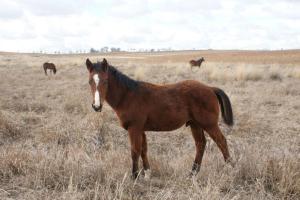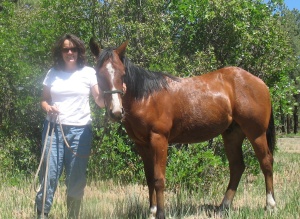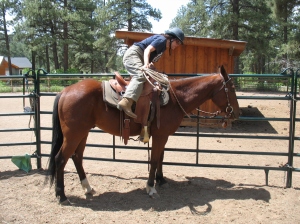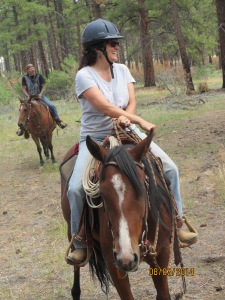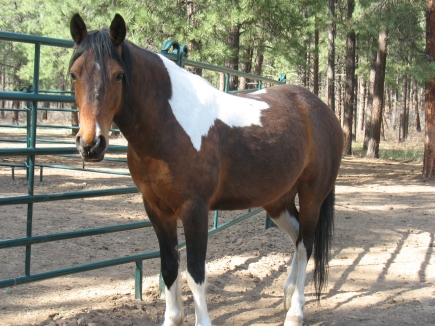
Danny is a very difficult horse. For reasons that could fill a book — and will, you can make advance reservations here for a book you can have read to you in 2056 in your hospice room — he long ago decided humans are either contemptible or dangerous, or both. He’ll accept petting and cookies, but he’ll turn himself inside out to avoid school or work.
The other night, Danny colicked. The word freezes the intestines of horse owners. A simple gastric hitch — maybe a clump of food that didn’t process well, an excess of gas, a bit of inflammation — can kill an otherwise healthy horse.
I don’t know why horses are designed with such vulnerable digestive systems. Horses can’t vomit. They have a single, small stomach, unlike cows. Their guts have to digest very tough, fibrous material, so they are extremely long and ropy, twisted into torturous coils in the back halves of their bodies. With only one way for anything to travel, and a densely packed container, the slightest disruption can cause extreme pain. Wikipedia lists 16 types of colic, including “other.” Unresolved colics can kill, particularly when the gut ruptures from the stress.
The other night, I went to bring the horses in from the pasture. Danny, for all his resistance to my leadership, is always first to come in from grazing. Because I serve a smidgeon of grain at this time. When I close the house door to head to the corral, he whinnies at me from wherever he is on the 25 acres. He comes running to get his nose first into the grain. The other two horses saunter in as and when they feel like it, sometimes requiring additional persuasion, but not Danny.
This night, Danny walked in slowly, second in line. He took his place by his bucket. I looked over all three to make sure all the body parts were where they belonged and headed back to the house. As I was leaving the corral, I noticed that Danny was just standing over his bucket, not eating. I paused. He stood. I turned to watch him.
His eyes were staring and locked. To my horror, he turned and bit at his belly, a classic sign of colic. Before I could move, he suddenly turned and charged aggressively at my older horse. This was so uncharacteristic, I began to worry in earnest. I grabbed a halter and collected Danny, taking him into my small training pen. I began walking him around aimlessly as I’ve been taught. He was vacant in the eye, stumbling a little as we walked. We would stop and his knees would buckle a little — either he was thinking of rolling or just unsteady on his legs, both bad signs. At one point, I let him loose in the pen to see what he would do and he started manically trotting around in small circles with no direction from me.
To make a long story tolerable, we spent an hour and a half together, waiting to see what would happen. I gave him an anti-inflammatory drug. I walked him. I loaded him in and out of the trailer, I had him stand with just his hind feet in the trailer (downward facing pony pose) and then just his fronts. I walked him some more. His frightening behavior lessened. When he seemed a little more with it, I moved him around in small circles, asking him to bend his body laterally. He immediately started farting and didn’t stop for long minutes. The relief floated up from him, along with the offending gas. As we walked back to meet the other horses, he let out a distinct belch and looked satisfied with himself.
So all was well. The real story happened the next day. I went into the corral with a halter to catch my young horse for some schoolwork. Usually, Danny avoids me. With a turn of his head, a half-turn of the the body, a slow saunter, or a determined trot, he goes away when I come with a halter. This day, he didn’t. He stood looking at me. I approached him as an experiment and, by god, he stepped towards me. I pretended to catch him, just to make my point, and petted him vigorously all over, before going about my business with the other horse. The next day, he did the same thing. The third day, I stood with Danny while he got new shoes put on and he was as peaceful and affectionate as I’ve ever seen him.
We are warned not to anthropomorphize our horses, even while we spend all our time trying to understand their psyches. Of course we can’t help but anthropomorphize them — we have only our anthropoid eyes to see them with and anthropoid brains to process the data. Pretending to be objective about animals is like pretending we only have eyes to perceive a park and the sounds don’t matter. However, we can do our best not to project ourselves onto them, trying our hardest to see them with all of our senses as they are and not as we want them to be.
Did Danny decide I could be trusted after all? Was he grateful that I helped him? Did he form a Pavlovian positive association between me and those blissful farts? Did he sense that I wanted to help and was willing to stick with him until he was fit again and appreciate it? I’ll never know what happened inside him, but I know how it looked — and felt — from the outside.
